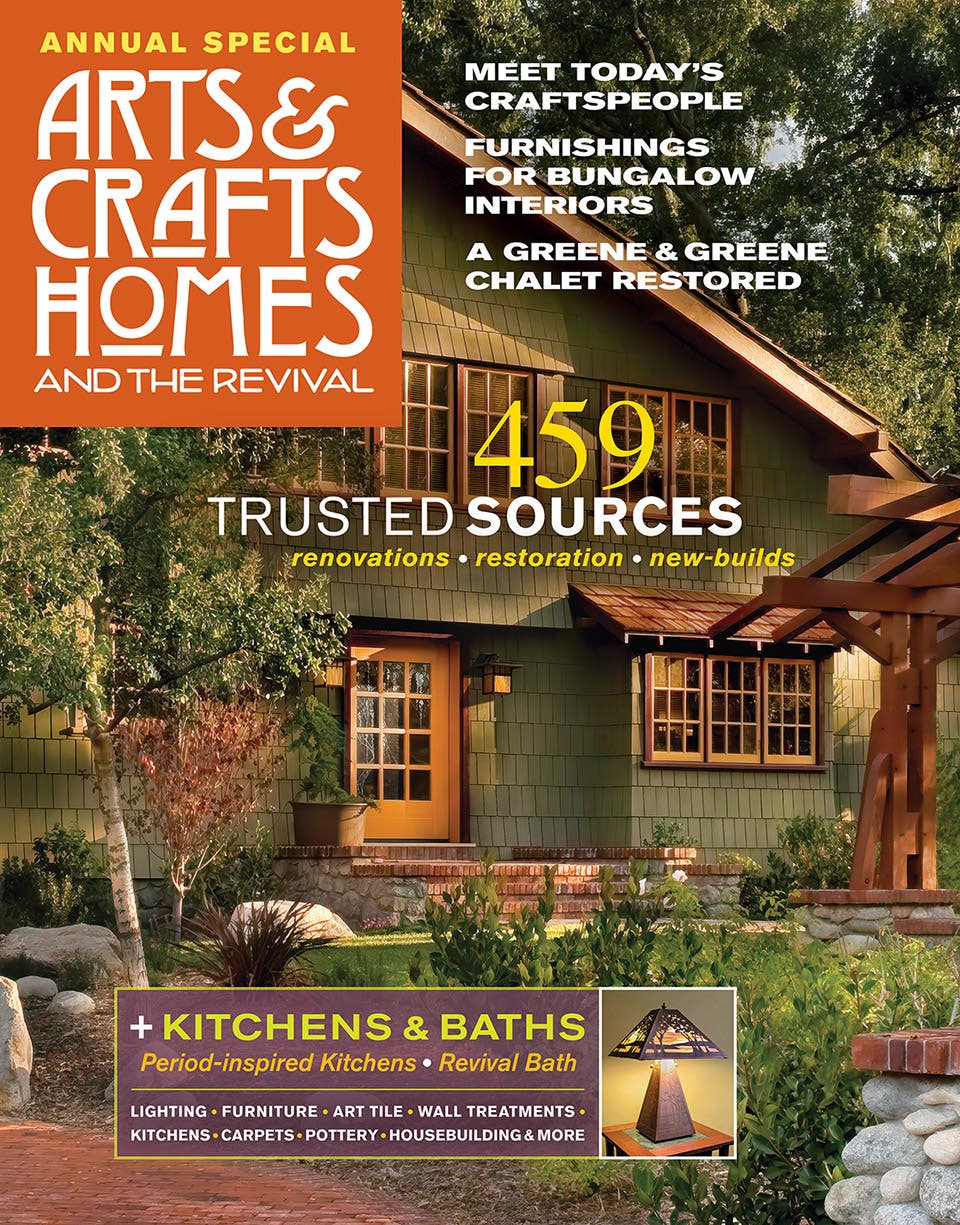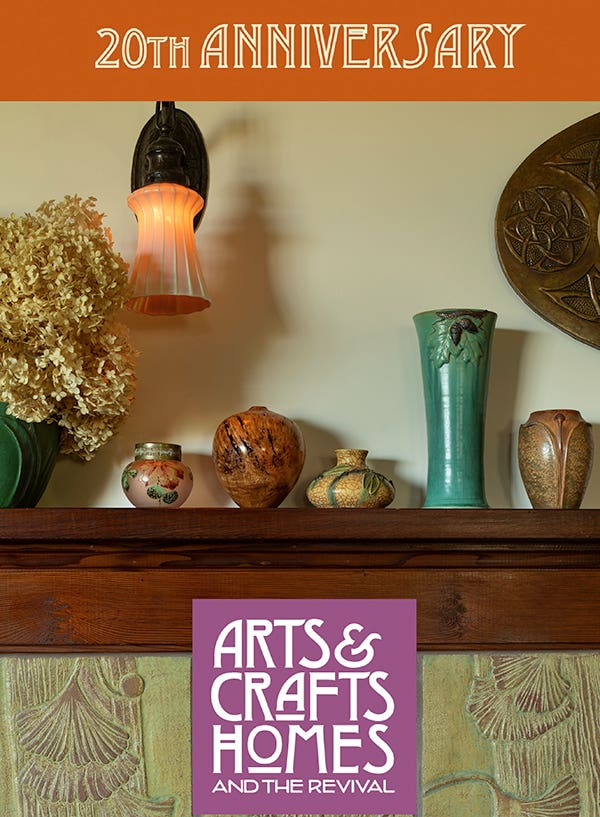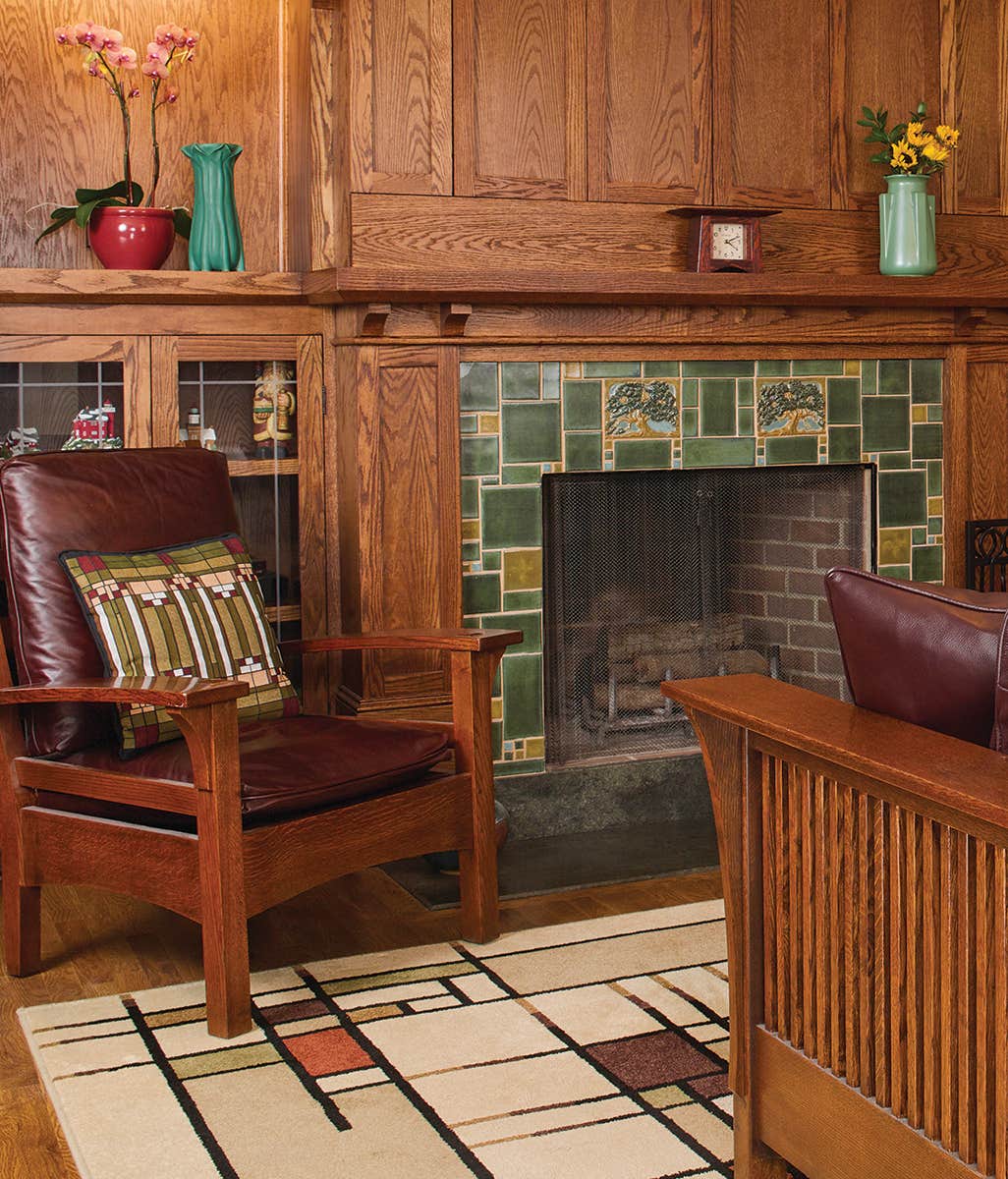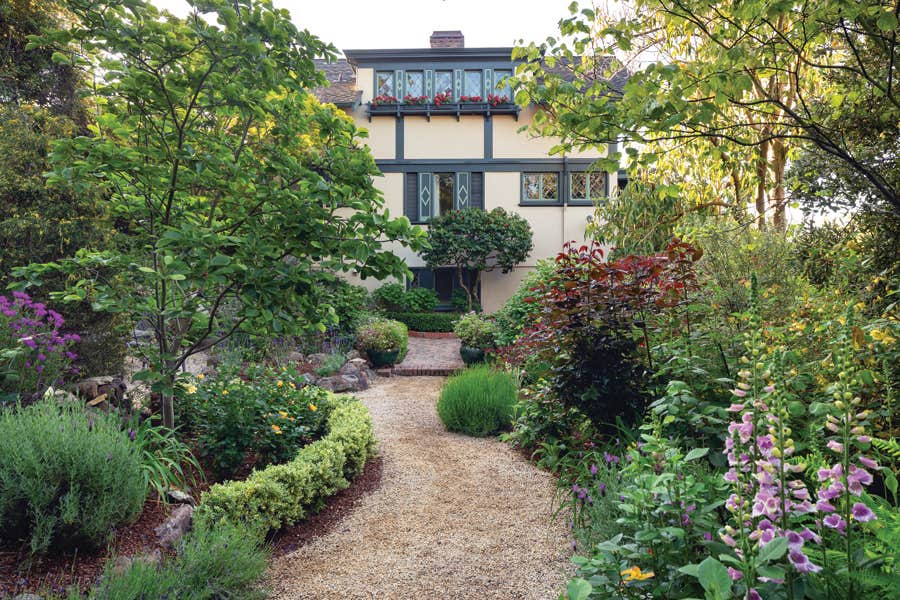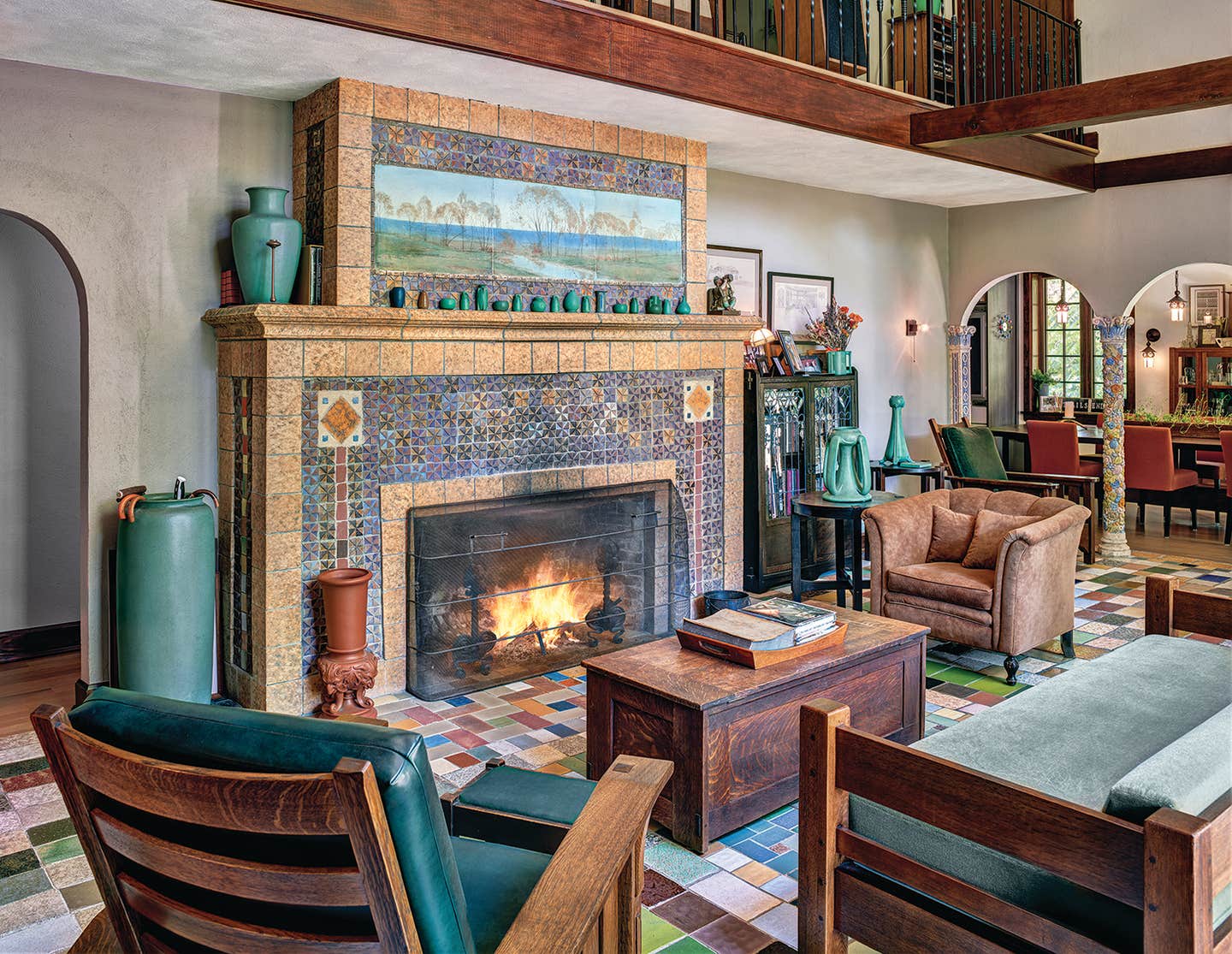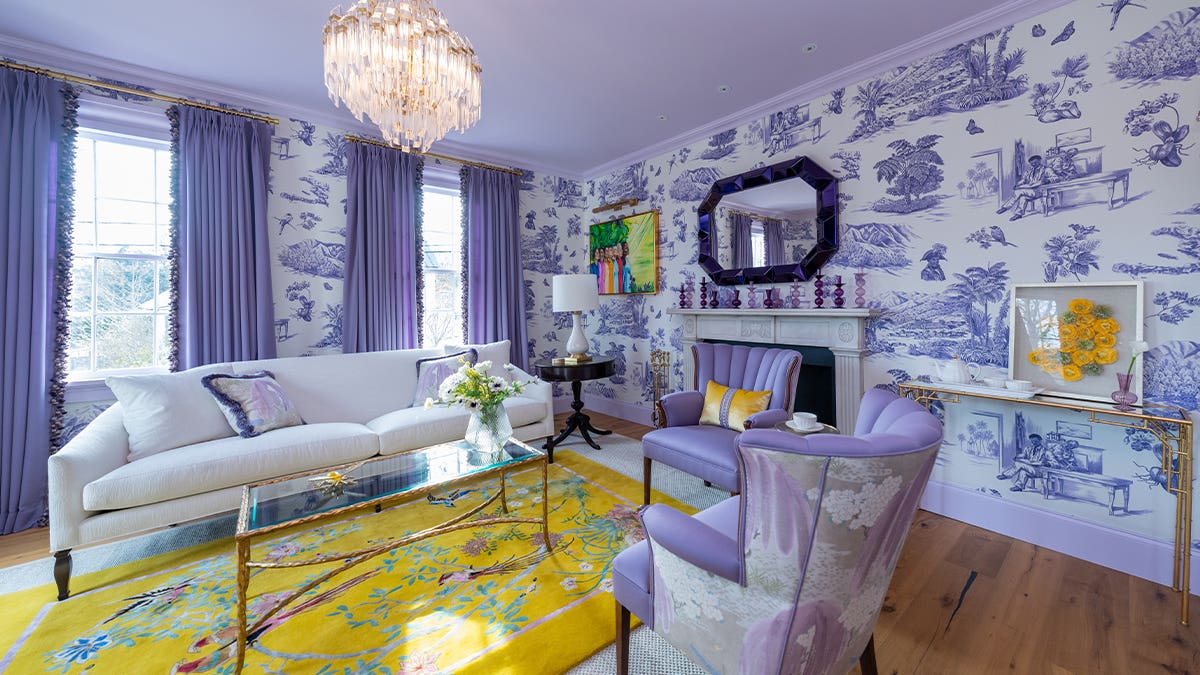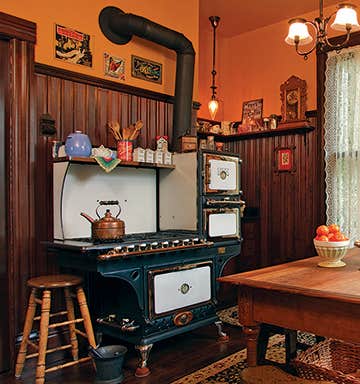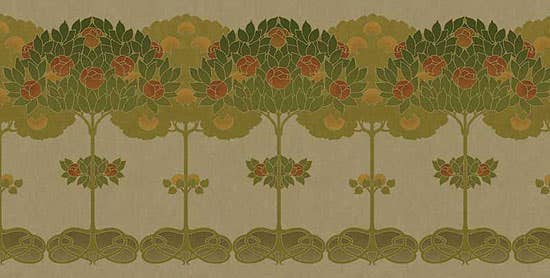A Portland Bungalow, Curated For Comfort
With an artist’s eye and a sympathetic palette for rooms inside, Gwen Jones fine-tunes a handsome 1916 house.
An artist and craftsperson with knowledge of period design, Gwen Jones had a good idea of what she wanted when she moved to Portland: an old house, comfortable, not a fixer-upper, with space for her floorcloth-making business. (A precursor to linoleum, a floorcloth is heavy canvas, sized and stretched, filled and decoratively painted.) After seeing 40 properties, she’d about given up—then she came upon a Craftsman semi-bungalow (one and a half storeys). Built for $2,000 for a railway conductor, it needed only gentle updating, having been nicely restored by previous owners, who’d also upgraded systems and the kitchen.
The 1916 semi-bungalow betrays the turn toward Colonial Revival sentiment, with French doors and painted trim found behind the Craftsman-style double-gable facade with its battered porch posts and exposed rafters. Steps lead past a front garden to a porch with bold structural details. The 48-inch-wide front door, a Craftsman version of a glazed door with 12 lights, allows sunlight to stream into the living room that runs the width of the house. The dining room’s built-in buffet is still here, and, beyond the kitchen, a pleasant sunroom.
Gwen was captivated by such details as the octagonal, opalescent milk glass doorknobs. The large garage, also dating to 1916, would make the perfect studio. That’s where work began: she insulated and drywalled the building, then laid a wood floor. A salvaged “picture window” overlooks the rear garden.
In the main house, Gwen started by freshening rooms with color. The downstairs guest bedroom is serene in Farrow & Ball’s Green Ground; the kitchen was updated with Benjamin Moore’s creamy Cornsilk. Vintage and reproduction lighting includes a cluster of early-20th-century, “Venetian” wrought-iron hanging lanterns.
The kitchen already had cherry cabinets with Arts & Crafts detailing and an ample farmhouse sink. Gwen created a floorcloth she based on a 1912 Arts & Crafts ceiling decoration; it’s colored tawny yellow and black granite with red accents, tying together the wall color and cherry cabinets.
“I went on a three-month extravaganza of painting,” Gwen jokes, recoloring the living room in light-toned Hinoki from Sherwin–Williams. The original brick fireplace surround, which had been painted an unappealing tan color, was faux-finished in deep turquoise to reflect the ceramic glaze of a prized pot that rests on mantelshelf.
Saving the best for last, Gwen considered the dining room. Walls were painted gold-toned Walk on the Beach by Benjamin Moore, and the elaborate ceiling trim came to life with White Raisin by Sherwin–Williams. In the 10"-deep frieze area, Gwen stenciled a stylized pattern in micaceous gold with purple and green highlights. She based the design on Canton fairy bells (‘Night Heron’) that grow outside the window.
About Bolling & Co.
Archivist and restoration consultant Bo Sullivan is the founder of Bolling & Co., a unique business buying and selling rare, antique American wallpapers. Initially housed inside Portland’s Rejuvenation store, the enterprise moved in 2017, after Gwen Jones became Bo’s partner at Bolling & Co.
The company’s studio showroom is now in Gwen’s garage, and production (of framed works) has moved to her large basement. Gwen’s other business is making custom art floorcloths: Ariel Grace Design.
Brian D. Coleman, M.D., is the West Coast editor for Arts & Crafts Homes and Old House Journal magazines, our foremost scout and stylist, and has authored over 20 books on home design.

